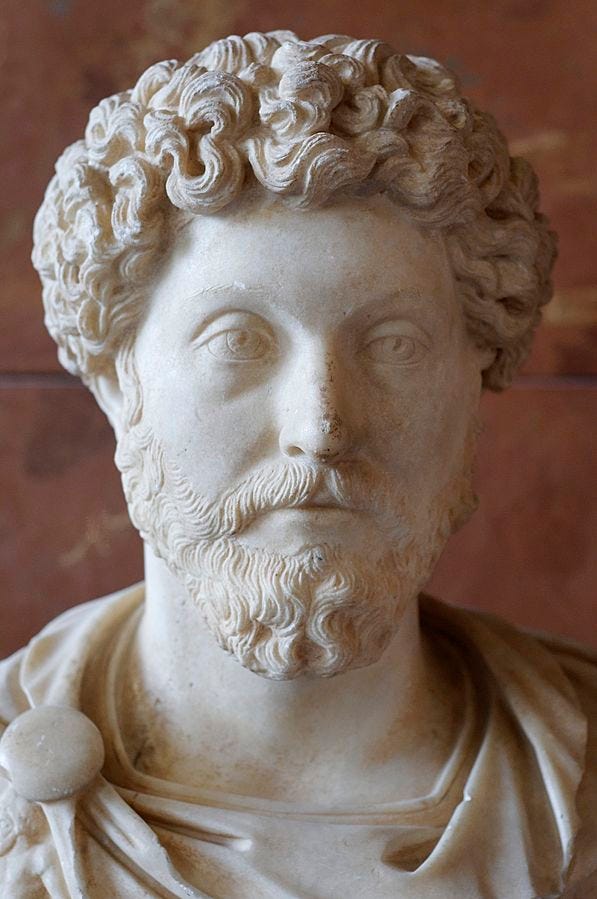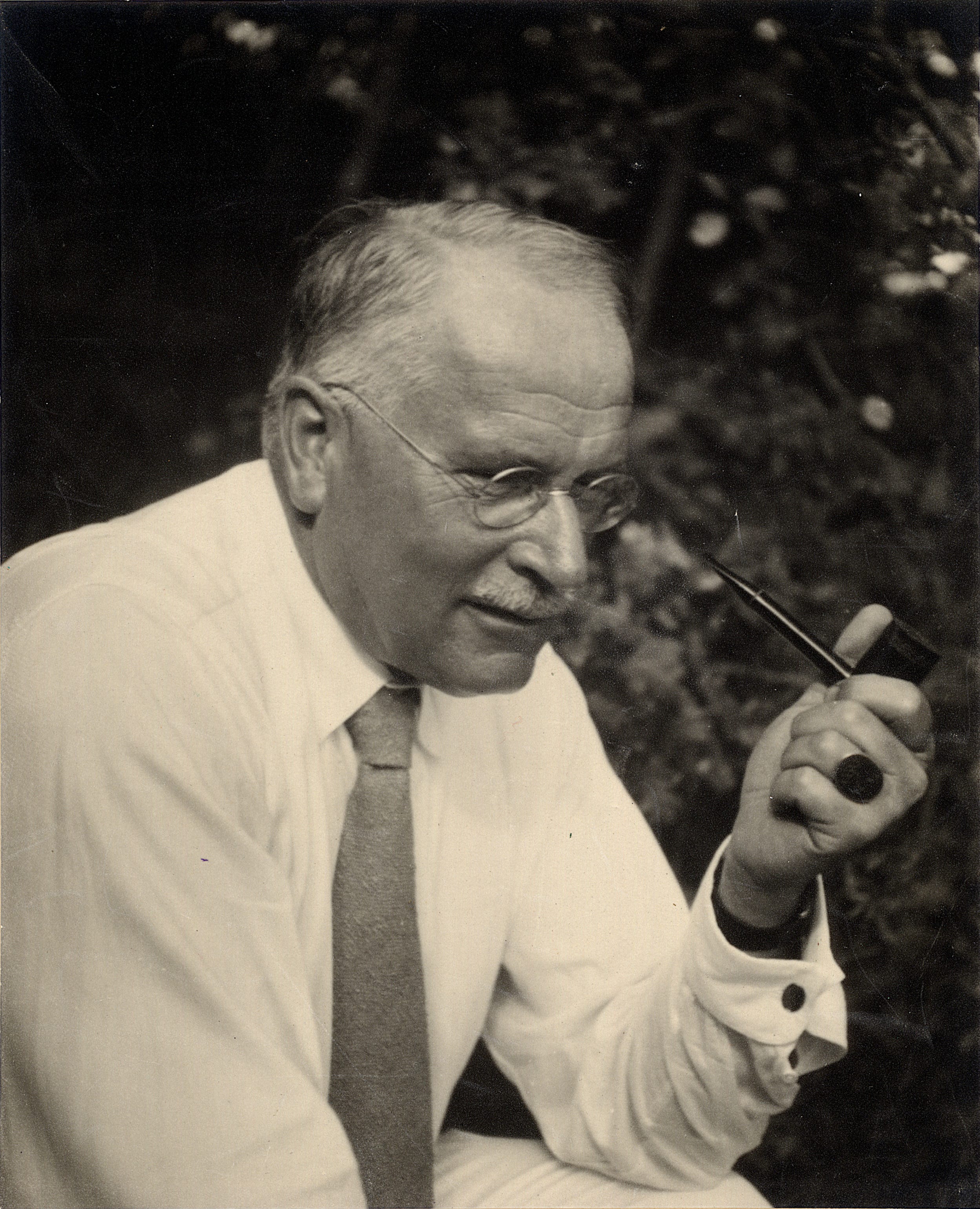If you want to know your own thoughts, it’s not enough just to think them. Keep a journal. Journaling is to thinking as mapmaking is to exploring. It’s how you locate the exact position of your thoughts, trace how you got there, mark areas of interest to visit later, record the dangerous spots, and plan where you want to go. Plenty of successful men and women have kept journals. It’s not just teenage girls writing about boys in a diary. It’s not just young men having an existential crisis. It’s the leader of the known world and a doctor developing a theory of the mind with as much science as he can employ. It’s the Roman Emperor Marcus Aurelius and the Swiss psychoanalyst, Carl Jung. We can read both their journals, although they never intended to publish them. They’re the private thoughts of two men talking to themselves; one sounding crazier than you’d expect him to be, the other sounding more human. The crazy sounding one had a reputation to protect. The other had an empire to run. They’re naked in their journals. The crazy one without the white coat of a doctor. The other without the crown of an emperor. MeditationsPortrait of Marcus Aurelius from Wikimedia Marcus Aurelius wrote his Meditations during military campaigns, in the wilds of present-day Austria, attempting to tame German tribes between 170-180 CE. When he was writing about dealing with difficult people or maintaining calm in the face of adversity, he was talking about multitudes who wanted to kill him. However, he wrote very little about day-to-day events. There was nothing about those deadly Germans or stubborn senators. There are only passages such as:
The whole book is like this, line after line of the emperor telling himself how to think about things from a Stoic point of view. He reminds himself to be prepared for difficult people, advocating resilience and composure. By recognizing that negative behavior stems from ignorance rather than malice, he tells himself to be empathic and patient. He acknowledges his own capacity for both good and evil, and confesses a shared humanity, despite differences in social rank and privilege. Stoicism was all the rage during the Roman Empire. Since then, it’s been re-imagined as a therapy; Cognitive Behavioral Therapy (CBT) to be exact. CBT is all the rage now. Whether you call it Stoicism or CBT, both emphasize the power of our thoughts in shaping our emotions and behaviors and urge us to focus on what we can control rather than what we can’t. They’ll have you challenge your irrational beliefs, practice mindfulness, and accept reality as it is. As Aurelius says,
He’s also all about focusing on the here and now.
Everything is temporary.
And he commits himself to a lifelong project of self improvement.
Does it work? Does telling yourself to be rational, practice mindfulness, and accept reality change the way you actually think, behave, and feel? It works better than not telling yourself those things. If you haven’t tried telling yourself to be rational, practice mindfulness, and accept reality, you should try it. It’ll take the edge off your suffering and make you a better person. You already know how negative and critical voices in your head impact you, why wouldn’t you want to generate an opposing narrative to balance it? Invite the wise words of a thoughtful person as you weigh your decisions. There’s no one better than Marcus Aurelius to remind you of the best you can be. Unfortunately, Stoicism and CBT don’t work all the time. We can never be perfectly rational. Emotions keep getting in the way. Knowing what to do and actually doing it are two different things. No matter how many times we tell ourselves not to, we’ll always rather have someone else to blame, let habit take over, and have better ideas than are ever found in reality. You never have perfect power over your own mind. You know you should eat better, but you scarfed down that donut anyway. Reading Meditations is like overhearing one part of Marcus Aurelius scolding another part. Perhaps, as an emperor, he believed he had every right to lecture his subjects that way; so he did the same to himself. Stoicism is a tyranny over the self. Its insistence on self-control can go too far and become self-oppression. The Red Book
Jung took a different approach in his journal, called the Red Book, after the color of its binding. He gave the pen to the parts of himself most people try to silence. Where Aurelius would be lecturing himself to be rational, practice mindfulness, and accept reality, Jung had the most irrational, unconscious, fantastical parts of himself do the writing.
He felt he had no choice. Jung found himself caught in the middle between the Spirit of the Times and the Spirit of the Depths. The Spirit of the Times was all about the scientific and industrial revolutions. It favored logical, scientific explanations over spiritual or mystical ones. Before he began his journal, he had adapted to those social norms and did what they told him to do. He got a degree, became a doctor, got married, and started a family; but the Spirit of the Depths would not leave him alone. It gave him visions of Europe engulfed in a sea of blood. He thought he was going insane until he recognized it prophesied World War I. This experience was pivotal for Jung. It convinced him of the reality of the collective unconscious and the importance of paying attention to the symbols and visions that arise from it. He wrote:
Jung developed a technique he called active imagination: deliberate, purposeful daydreaming. He'd take an image from a dream or fantasy and have a conversation with it. One such encounter was with an old man with bull's horns and the wings of a kingfisher named Philemon. Philemon would go on to be Jung’s guide to the unconscious. He later wrote in Memories, Dreams, Reflections:
It’s easy to dismiss the Red Book as the ravings of a madman. Jung admitted as much and kept it out of the public eye, but he continued to work on it, nonetheless.
However, during the sixteen years he kept the journal, he also maintained a demanding private practice, published many well-received books, was a family man, and became one of the most respected intellectuals of the time.
As he conducted his experiments in active imagination,
He found parallels between his experiences and those described in various cultural and religious traditions. This helped him view his experiences as tapping into something universal rather than purely personal delusions. Moreover, he found that engaging with his journal had a positive effect on his psychological state. He saw it as a process of integration and healing.
Jung found that the insights gained from this process were applicable in his work with patients, lending credibility to the experience. From the Red Book, he developed a philosophical framework to understand his paranormal experiences, which later became the foundation of his analytical psychology.
The Harmony of OppositesIf you were just looking for a good book to read, Meditations makes better reading. The Red Book is attractive only for Jungian enthusiasts. If you are looking for something to model your own journal upon, it depends on who you are and what you want your writing to do. Aurelius and Jung could not be more different. Aurelius gives you tools to navigate the everyday world, to deal with difficult people and to keep your cool when things get heated. His approach is like a sturdy ship that keeps you afloat. Jung, on the other hand, hands you scuba gear and takes you on a dive deep in your unconscious. His method helps you explore the rich, often untapped resources of your inner world. However, it’s a dangerous method if you do not have a sturdy ship to return to. Aurelius is best suited for daily challenges. When dealing with a difficult coworker or a frustrating situation, pull out his Stoic principles. Remind yourself that you can't control others, only your reaction to them. When you're feeling stuck, creatively blocked, or disconnected from yourself, try some active imagination, like Jung. Have a chat with a weird dream character. You might be surprised at the insights you gain. For decision-making, use both. Analyze the practical aspects Aurelius-style, but also check in with your gut feelings and intuitions à la Jung. For dealing with emotions, use Aurelius's approach to not get overwhelmed, but Jung's to understand and integrate those feelings rather than just suppressing them. For personal growth, alternate between structured self-reflection (Aurelius) and free-form exploration (Jung). Journal about your day-to-day challenges, but also about your dreams and fantasies. Cross-train your psyche. Balance is important. Too much Aurelius, and you might become rigid, suppressing important parts of yourself. Too much Jung, and you might lose touch with practical reality. But together, you've got a powerful combo for navigating both the outer world and your inner landscape. Aurelius helps you build a strong, stable sense of self, while Jung helps you expand and enrich that self. It's like having a solid home base (Aurelius) from which you can safely explore the wild, uncharted territories of your psyche (Jung). In the end, both Aurelius and Jung were after the same thing: self-knowledge and personal growth. They just took different routes to get there. Aurelius walked the well-trodden path of tradition and discipline, while Jung blazed a trail through the wilderness of the unconscious. But both paths lead to the same summit: a fuller, richer understanding of yourself and your place in the world. Invite your friends and earn rewardsIf you enjoy The Reflective Eclectic, share it with your friends and earn rewards when they subscribe. |
Wednesday, 16 October 2024
Two Journals
Subscribe to:
Post Comments (Atom)
The People of the Mind
Listen now (13 mins) | This chapter explores how we carry mental representations of people who have hurt us that continue to criticize us in...
-
https://advanceinstitute.com.au/2024/04/24/sunnycare-aged-care-week-10/?page_id=...
-
barbaraturneywielandpoetess posted: " life on a rooftop can be short ; depends whether one looks down or up . ...




No comments:
Post a Comment